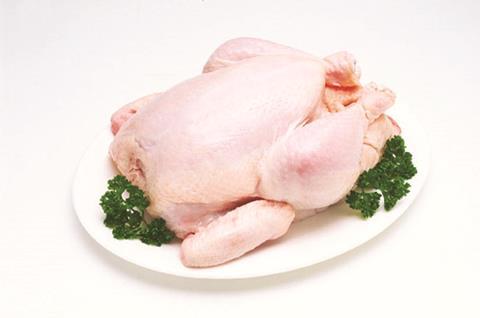A survey undertaken by the Food Standards Agency (FSA) has shown that campylobacter bacteria has decreased in whole chilled UK-produced birds compared to the same quarter in 2015.

The number of birds with the highest levels of contamination has also dropped.
The survey, taken for the January to March quarter, indicates that only 9.3% of chickens tested positive for the highest level of contamination compared with 21.8% for the three months from December 2014 to February 2015.
The survey results also indicate that campylobacter was present on 50% of the 1,009 fresh whole chilled chickens tested, which has decreased from 71% in the equivalent quarter of 2015.
The levels suggest that more retailers are removing the neck skin from whole birds before putting them on sale. The neck skin on a chicken is generally thought to be the most contaminated part of the chicken carcass.
Steve Wearne, director of policy at the FSA, said: “One of the reasons the survey results are lower this quarter is because of the decision taken by a number of retailers and their suppliers to remove neck skin from the bird before it goes on sale.
“This is good news for the consumer because the neck skin is the most contaminated part of the chicken. However it is also the part of the bird that we have been testing in our survey and this means that comparisons with previous results are not as reliable as we would like.
“Therefore, this quarter, we are giving an overall figure for the amount of campylobacter on chicken and not breaking the figures down by retailer as we normally do.”
This particular FSA survey will be the last, and a new one will start in the summer with a different method of testing campylobacter levels on chicken.
The first results from this survey, which will rank retailers, are due in January 2017.
This story was originally published on a previous version of the Meat Management website and so there may be some missing images and formatting issues.















